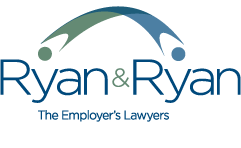The Department of Labor published its Final Rule defining ‘spouse’ in the Federal Register. The Final Rule expands the definition of ‘spouse’ by focusing on whether individuals are ‘spouses’ based upon the occurrence of a marriage rather than the location of residence, which may not recognize that marriage. As explained in the Federal Register, “[t]he Department is moving from a state of residence rule to a rule based on the jurisdiction where the marriage was entered into (place of celebration) to ensure that all legally married couples, whether opposite-sex or same-sex, will have consistent federal family leave rights regardless of where they live. 79 FR 36448.” The term ‘jurisdiction’ includes the several States as well as other countries so long as the marriage could have been entered into in at least one of the several States. The change was made by the Department “in light of the United States Supreme Court’s decision in United States v. Windsor, which found section 3 of the Defense of Marriage Act (DOMA) to be unconstitutional.” The Final Rule takes effect on March 27, 2015.
It should be noted that the rule as to ‘common law’ marriages did not change, and that FMLA rights are extended to an employee married by ‘common law’ even though not recognized in the State in which the employee is employed. Thus, while Connecticut does not recognize ‘common law’ marriage arising in Connecticut, it should generally be considered to exist when the ‘common law’ marriage arises lawfully pursuant to the law of one of the several States or an international jurisdiction (so long as the marriage could have been entered into in at least one of the several States).
The general eligibility criteria of FMLA still apply. As before, FMLA generally covers employers with 50 or more employees. In order for an employee to be eligible to take a leave of absence pursuant to FMLA, an employee must have: (1) been employed by a covered employer for at least twelve (12) months; (2) worked the requisite number of hours during that twelve (12) month period prior to the start of the leave of absence; and (3) worked at a location where the employer, within a seventy-five (75) mile radius, employed at least 50 employees.
Please contact David Ryan for more information, or to see how we can help you.
